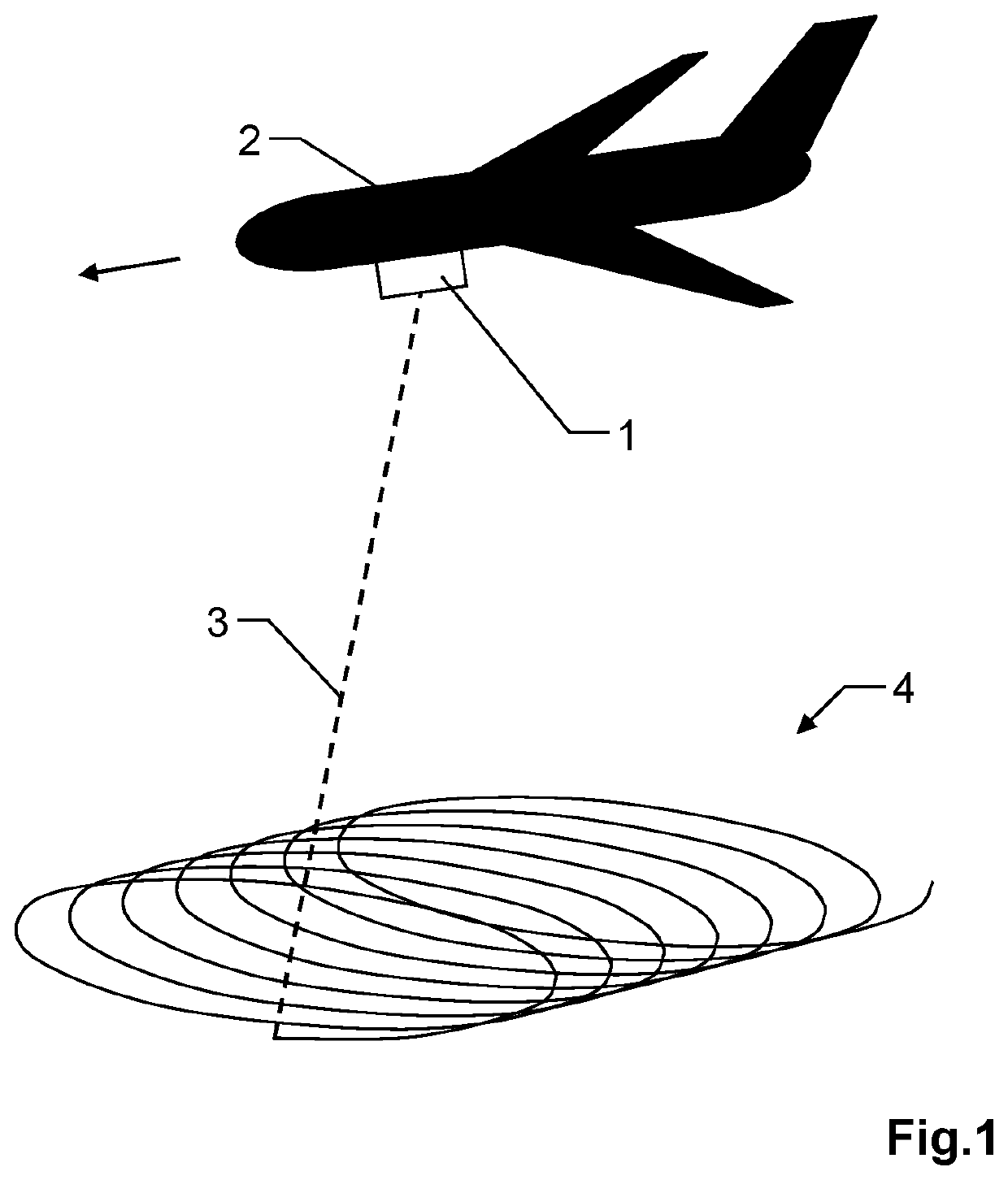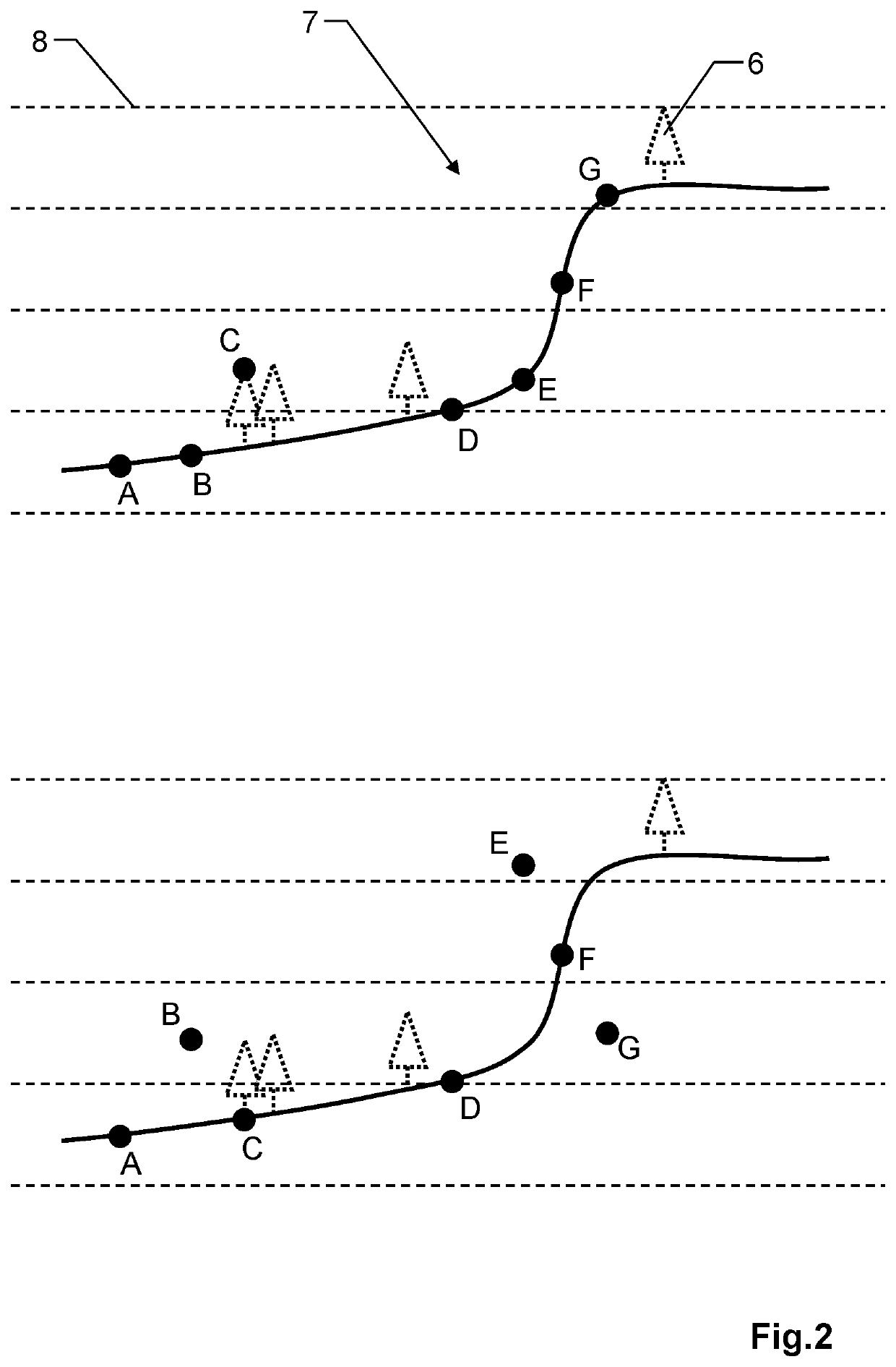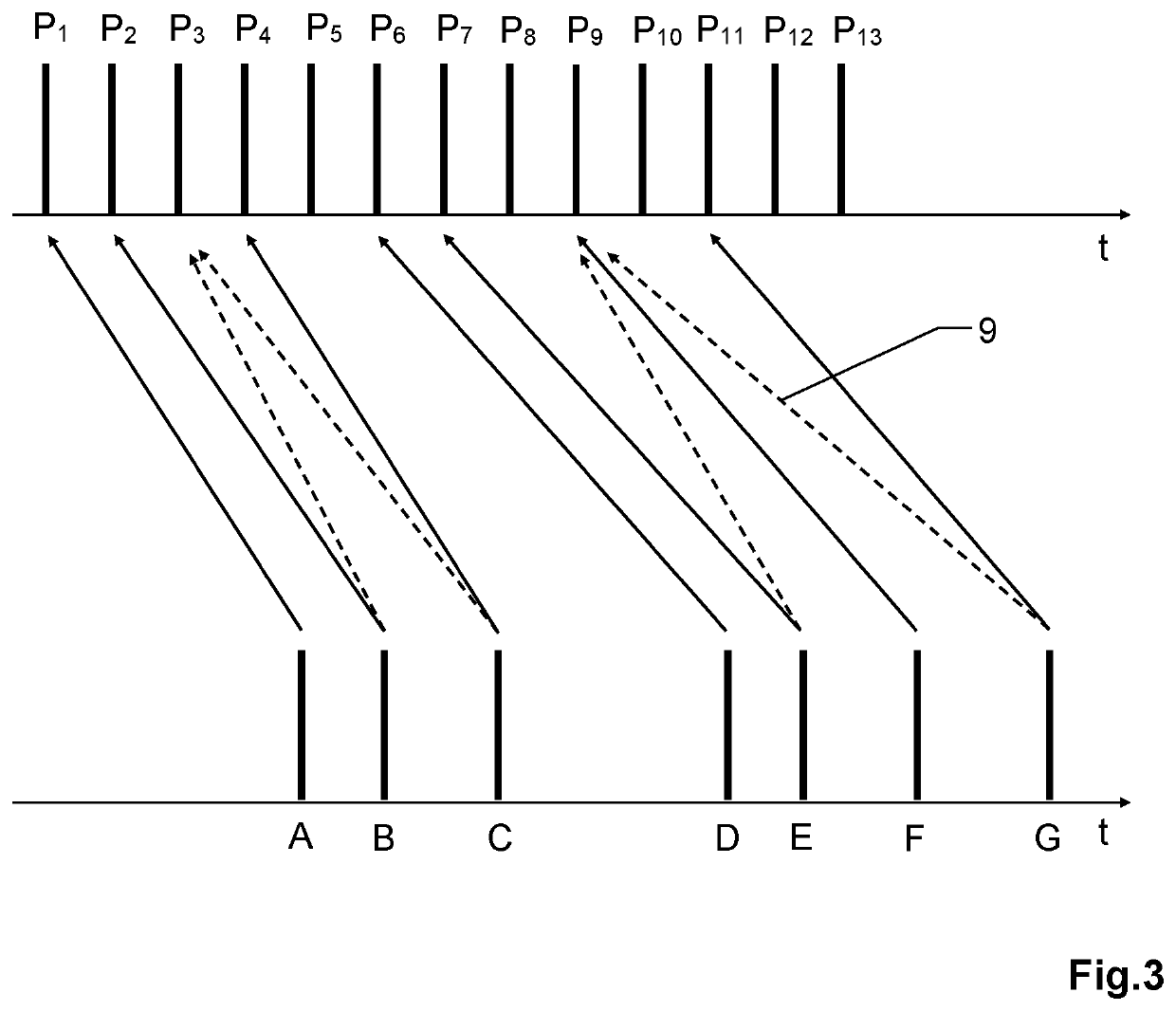Multiple-pulses-in-air laser scanning system with ambiguity resolution based on range probing and 3D point analysis
- Summary
- Abstract
- Description
- Claims
- Application Information
AI Technical Summary
Benefits of technology
Problems solved by technology
Method used
Image
Examples
Embodiment Construction
[0057]FIG. 1 shows an exemplary embodiment of the inventive MPiA laser scanner 1 in the field of airborne surveying, wherein the laser scanner 1 is installed in an airborne carrier, e.g. an airplane 2 or satellite. By way of example, the laser scanner 1 is configured for scanning with a circular scan pattern, e.g. using a rotating tilted deflection mirror, wherein an actual scanner pointing direction 3 is indicated. Due to the circular scanning motion by the laser scanner 1 and the forward flight movement of the carrier 2, the surface area is drawing a spiral scan pattern 4 on the ground. Thanks to the spiral scan pattern 4 many surface points will be scanned from two viewing angles, thus minimizing shadow effects.
[0058]Usually several additional or complementary data sources and measuring devices are used for improving or calibrating the LiDAR measurement, particularly additional means for determining the position and orientation of the airborne carrier 2, e.g. comprising an altime...
PUM
 Login to View More
Login to View More Abstract
Description
Claims
Application Information
 Login to View More
Login to View More - R&D
- Intellectual Property
- Life Sciences
- Materials
- Tech Scout
- Unparalleled Data Quality
- Higher Quality Content
- 60% Fewer Hallucinations
Browse by: Latest US Patents, China's latest patents, Technical Efficacy Thesaurus, Application Domain, Technology Topic, Popular Technical Reports.
© 2025 PatSnap. All rights reserved.Legal|Privacy policy|Modern Slavery Act Transparency Statement|Sitemap|About US| Contact US: help@patsnap.com



